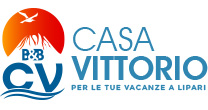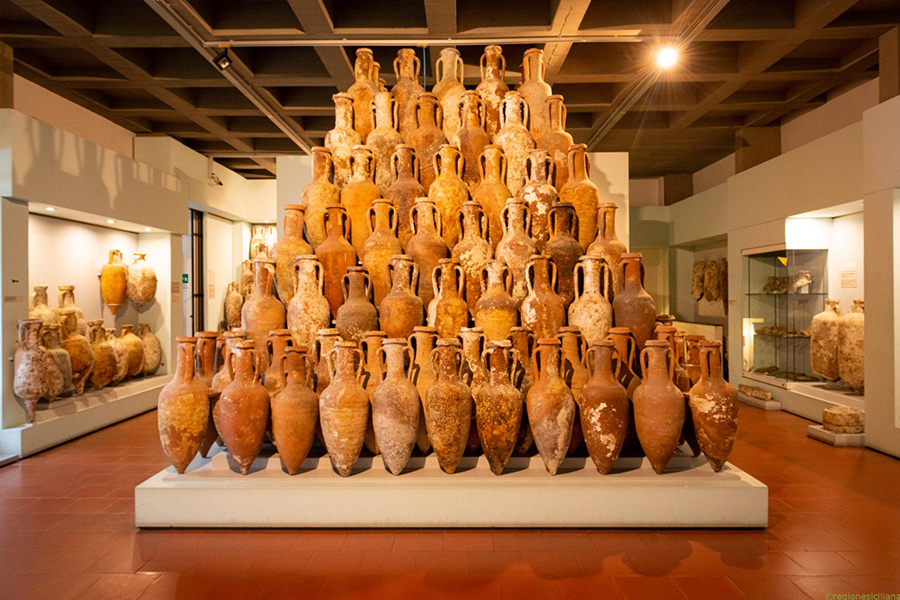Lipari, the largest of the Aeolian Islands, is not only a destination famous for its beaches and breathtaking landscapes, but also a place rich in history and culture. If you are an archeology enthusiast, the Luigi Bernabò Brea Archaeological Museum is an unmissable stop during your visit. Located inside the Castle of Lipari , this museum houses a unique collection that tells the thousand-year history of the archipelago and its ancient roots.
1. The Luigi Bernabò Brea Archaeological Museum
The Luigi Bernabò Brea Archaeological Museum is named after the famous Italian archaeologist who dedicated his career to the study of the Aeolian Islands. The museum is one of the main cultural institutions in the area and collects finds that cover a wide time span, from prehistory to Roman times.
What to See at the Museum:
- Prehistoric Finds : The museum houses a vast range of objects from the prehistoric excavations of the Aeolian Islands, including stone and bone tools, which tell the story of the life of the first populations of the archipelago.
- Greek and Roman Ceramics and Objects : One of the most fascinating sections is the one dedicated to ancient ceramics, with vases, plates and other objects that testify to the presence of Greek and Roman civilizations on the island. Among the most interesting finds there are also funerary urns and architectural decorations.
- Volcanic and Mining Peculiarities : The museum also includes objects related to the mining and volcanic activity of the islands, in particular the processing of obsidian, a volcanic stone used since ancient times for the creation of tools and weapons.
2. The History of Lipari Castle
The museum is housed inside the Castle of Lipari , an imposing fortress that played a fundamental role in the history of the island. The castle was built by the Greeks and subsequently expanded by the Romans, Byzantines and Normans, and has represented an important center of defense and power for centuries. Today, the castle also offers spectacular panoramic views of the island and the surrounding sea, which adds a special touch to your visit to the museum.
3. The Museum in Detail
- Ceramics Collection : The museum boasts an extraordinary collection of ancient ceramics, ranging from prehistory to Roman domination. Objects such as plates, vases and cups tell the story of the daily life of the ancient Aeolian populations.
- Fossil and Mineral Finds : The excavations have brought to light numerous fossils and minerals that testify to the unique geology of the Aeolian Islands, characterized by the presence of active volcanoes. Some of these finds are displayed in the museum to show the connection between nature and the history of the islands.
- Finds Related to Cults and Burials : The museum also displays finds related to the funerary and religious practices of ancient populations. Among these, the cinerary urns and ritual artefacts stand out, which reveal aspects of the spirituality and culture of the peoples who inhabited the island.
4. How to Visit the Museum
The Luigi Bernabò Brea Archaeological Museum is located a few steps from the port of Lipari, in the heart of the city. It is open all year round, with hours that may vary depending on the season, so it is advisable to check the opening times before visiting. The structure also offers guided tours that will allow you to discover every corner of the museum and better understand the historical significance of each exhibit.
The Luigi Bernabò Brea Archaeological Museum of Lipari is a fundamental stop for those who want to learn about the history and culture of the Aeolian Islands. With its rich collection of prehistoric, Roman and medieval artefacts, the museum offers a fascinating journey into the archipelago's past, allowing visitors to better understand the evolution of the islands and the role they played in ancient Mediterranean trade routes. If you are planning a visit to Lipari, don't miss the opportunity to explore this extraordinary museum!




